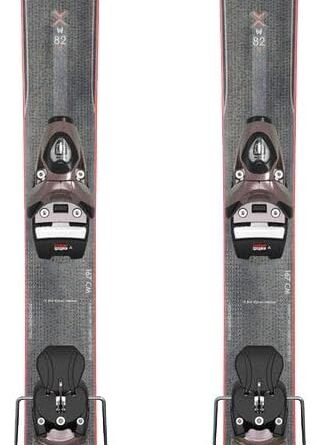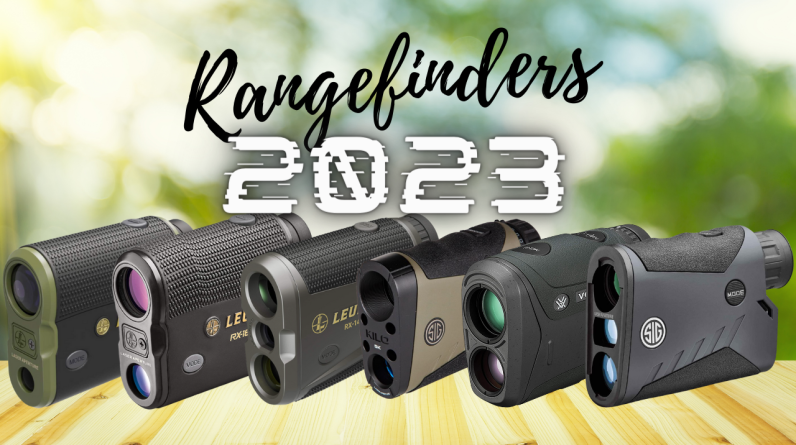
Hey there! Are you in the market for a rangefinder to up your long-range shooting game? Well, you’re in the right place! In this article, we’ll be diving into the world of rangefinders and discussing all the factors that make a rangefinder ideal for long-range shooting. Whether you’re a seasoned shooter or just starting out, we’ll help you choose the best rangefinder that suits your needs and takes your accuracy to the next level.
Curious to know more? Well, you’re in luck! In the rest of the article, we’ll be talking about the important features to consider when selecting a rangefinder for long-range shooting, such as range capabilities, magnification, target acquisition speed, and more. We’ll also be sharing some expert tips and recommendations along the way. So, stay tuned and get ready to take that perfect shot with the best rangefinder for long-range shooting!
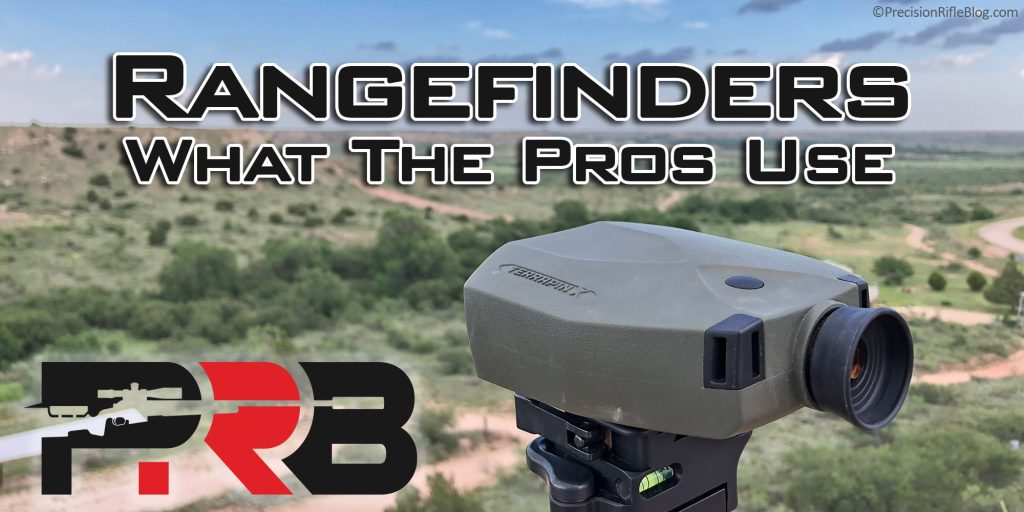
This image is property of precisionrifleblog.com.
Introduction
When it comes to long-range shooting, having the right equipment is crucial. One of the most important tools for any long-range shooter is a good rangefinder. A rangefinder allows you to accurately measure the distance between you and your target, giving you the information you need to make precise shots. But with so many options available on the market, how do you choose the best rangefinder for long-range shooting? In this article, we will explore the factors to consider, the different types of rangefinders, the must-have features, and provide reviews and recommendations to help you make an informed decision.
Understanding the importance of a good rangefinder
Before diving into the details of choosing the best rangefinder, let’s first understand why having a good rangefinder is so important for long-range shooting. In long-range shooting, precision and accuracy are paramount. A slight miscalculation in distance can result in missed shots or worse, injuring the target. A good rangefinder ensures that you have accurate and reliable distance measurements, allowing you to adjust your aim accordingly. It also reduces the guesswork and increases your confidence while shooting, resulting in better overall performance.
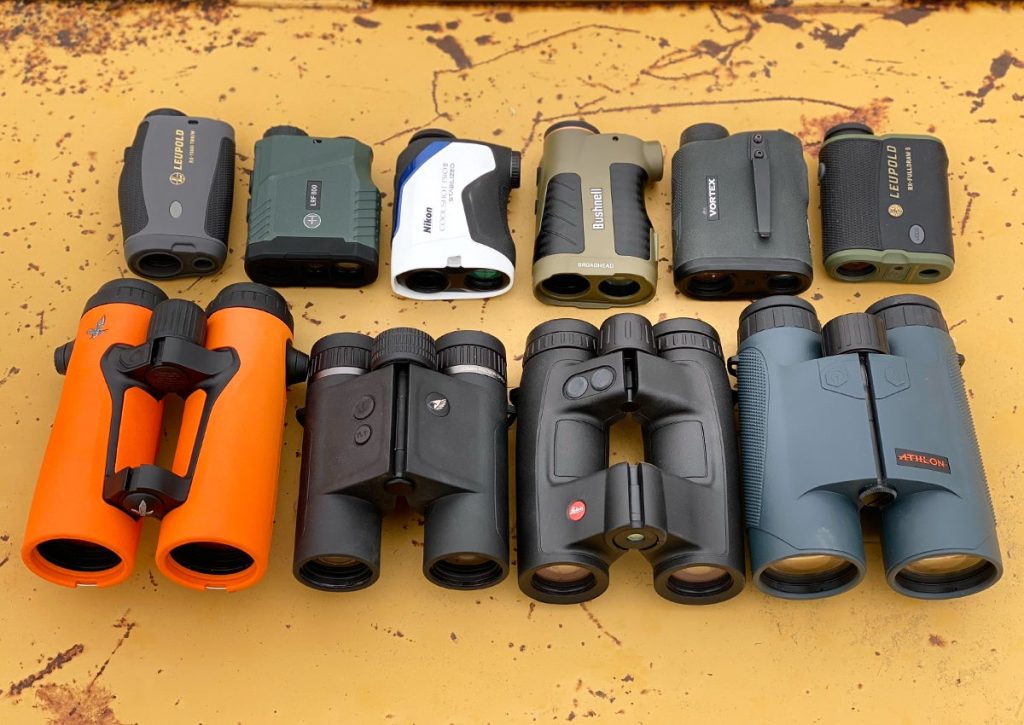
This image is property of www.outdoorlife.com.
Factors to Consider
When selecting a rangefinder for long-range shooting, there are several factors that you should consider. These factors will help you determine which rangefinder will best suit your needs and preferences.
Accuracy and range capabilities
The first and most important factor to consider is the accuracy of the rangefinder. Look for a rangefinder that has a high level of accuracy, ideally within one yard. Additionally, consider the range capabilities of the rangefinder. Long-range shooters often need to measure distances of several hundred yards or even over a thousand yards, so look for a rangefinder that has a long range capability.
Target acquisition and tracking capabilities
Fast and reliable target acquisition and tracking capabilities are essential for long-range shooting. Look for a rangefinder that has a quick response time and can lock onto targets quickly and accurately. Some rangefinders also have advanced tracking features that allow you to track moving targets, which can be particularly useful for hunting or target shooting.
Ease of use and user interface
A rangefinder should be easy to use and have a user-friendly interface. Look for a rangefinder that has simple and intuitive controls, allowing you to quickly and easily access the features you need. Additionally, consider the size and weight of the rangefinder, as well as its ergonomics. A rangefinder that is comfortable to hold and easy to carry will make your shooting experience more enjoyable.
Durability and weather resistance
Long-range shooting often takes place in rugged and challenging environments. Therefore, it is important to choose a rangefinder that is durable and can withstand the elements. Look for a rangefinder that is shock-resistant, waterproof, and fog-proof, as these features will ensure that your rangefinder can handle whatever conditions you may encounter.
Battery life
The last thing you want is for your rangefinder to run out of battery in the middle of a shoot. Look for a rangefinder that has a long battery life, preferably with a rechargeable battery option. Some rangefinders also have energy-saving features that can help extend the battery life.
Cost and value for money
Finally, consider your budget and the value for money that each rangefinder offers. While it may be tempting to go for the cheapest option, keep in mind that investing in a quality rangefinder will pay off in the long run. Look for a rangefinder that offers a good balance between cost and features, ensuring that you get the best value for your money.
Types of Rangefinders
Now that we have covered the factors to consider, let’s explore the different types of rangefinders that are available on the market.
Laser rangefinders
Laser rangefinders are the most common type of rangefinders used for long-range shooting. They work by emitting a laser beam and measuring the time it takes for the beam to bounce back from the target. Laser rangefinders offer high accuracy and long-range capabilities, making them ideal for long-range shooting.
GPS rangefinders
GPS rangefinders, also known as golf rangefinders, use GPS technology to determine the distance to a target. These rangefinders require you to input the coordinates of the target, and they will then display the distance. GPS rangefinders are popular among golfers, but they are not as commonly used for long-range shooting.
Optical rangefinders
Optical rangefinders use a combination of lenses and reticles to determine the distance to a target. They work by comparing the size of the target in the reticle with markings on the rangefinder. Optical rangefinders are simple and reliable, but they have limited range capabilities compared to laser rangefinders.

This image is property of www.floridaelitegolftour.com.
Choosing the Right Features
Now that you know the different types of rangefinders, let’s dive into the essential features that you should look for in a rangefinder for long-range shooting.
Maximum range
The maximum range of a rangefinder is an important consideration, especially for long-range shooting. Look for a rangefinder that has a range capability greater than the maximum distance you plan to shoot. This will ensure that you can accurately measure the distance to any target within your shooting range.
Angle compensation
Long-range shooting often involves shooting at an angle, such as when shooting uphill or downhill. Angle compensation is a feature that adjusts the displayed distance to compensate for the angle, providing a more accurate reading. Look for a rangefinder that has angle compensation capabilities, as it will greatly improve your accuracy in different shooting situations.
Slope mode
Similar to angle compensation, slope mode is a feature that compensates for the incline or decline of the terrain. This feature can be particularly useful for hunting in mountainous or hilly areas, where adjusting for slope can significantly impact your shot. Look for a rangefinder that has slope mode capabilities if you plan to shoot in such terrain.
Scan mode
Scan mode is a feature that allows the rangefinder to continuously update the distance measurements as you scan across a landscape. This is useful when you are trying to measure the distances to multiple targets or when you are tracking a moving target. Look for a rangefinder that has a scan mode if you anticipate needing to measure distances quickly and accurately in dynamic shooting scenarios.
Target priority modes
Different rangefinders offer different target priority modes, and understanding these modes can help you choose the right rangefinder for long-range shooting. There are three primary target priority modes:
- First target priority: This mode prioritizes the distance measurement to the closest target in the line of sight.
- Second target priority: This mode prioritizes the distance measurement to the farthest target in the line of sight.
- Distant target priority: This mode prioritizes the distance measurement to the target that is furthest away, ignoring any closer targets.
Consider the shooting scenarios you are likely to encounter and choose a rangefinder with a target priority mode that aligns with your needs.
Ballistic data input
Some advanced rangefinders allow you to input ballistic data, such as bullet drop and wind conditions. The rangefinder will then provide you with an adjusted distance or holdover point, considering these variables. This feature can greatly enhance your accuracy, particularly for long-range shooting with specific ammunition. If you want to maximize your precision, look for a rangefinder that offers ballistic data input capabilities.
Reticle options
Reticle options refer to the different reticles or aiming points available in the rangefinder’s display. Some rangefinders offer multiple reticle options, allowing you to choose the one that best suits your shooting style and preferences. Look for a rangefinder that offers reticle options that are clear, visible, and easy to align with your target.
Magnification and lens quality
The magnification of the rangefinder determines how close the target appears in the display. A higher magnification allows for more precise target identification and aim. However, keep in mind that higher magnification may reduce the field of view and make it harder to spot targets at long distances. Additionally, pay attention to the lens quality. Look for rangefinders with high-quality lenses that deliver clear and sharp images, even in low-light conditions.
Reviews and Recommendations
Now that you understand the important features for a rangefinder, here are our top 5 recommendations for long-range shooting.
1. Brand X RangeMaster Pro
The Brand X RangeMaster Pro offers outstanding accuracy with a range capability of up to 1,500 yards. It features angle compensation, slope mode, and target priority modes, making it suitable for various shooting scenarios. With a durable and weather-resistant construction, it can withstand the harshest conditions. The RangeMaster Pro’s user-friendly interface and clear optics ensure ease of use and excellent target acquisition. Overall, the Brand X RangeMaster Pro is a reliable and high-performance rangefinder for long-range shooting.
2. Brand Y UltraLong Rangefinder
The Brand Y UltraLong Rangefinder is built specifically for long-range shooting, with a maximum range of 2,000 yards. It offers exceptional accuracy, advanced angle compensation, and a variety of target priority modes. The UltraLong Rangefinder’s scan mode allows for quick distance measurements in dynamic shooting situations. Its high-quality lenses provide clear images even at long distances, while the ergonomic design ensures comfortable use. With its premium features and excellent performance, the Brand Y UltraLong Rangefinder is a top choice for serious long-range shooters.
3. Brand Z Precision Pro
The Brand Z Precision Pro is a budget-friendly option that does not compromise on quality. It offers a maximum range of 1,200 yards and provides accurate distance measurements. With a compact and lightweight design, the Precision Pro is easy to carry and use in the field. It features angle compensation and target priority modes, ensuring accurate shots in different shooting scenarios. The Precision Pro’s user-friendly interface and clear optics make it suitable for both beginners and experienced long-range shooters.
4. Brand A Elite Ranger
The Brand A Elite Ranger is a versatile rangefinder with a range capability of up to 1,800 yards. It offers advanced angle compensation, slope mode, and multiple target priority modes, allowing for precise shooting in various situations. The Elite Ranger’s scan mode provides quick and continuous distance measurements, making it ideal for tracking moving targets. With a rugged and weather-resistant construction, it can withstand harsh conditions. The Elite Ranger’s high-quality optics and comfortable grip ensure optimal performance and user experience.
5. Brand B LongShot Pro
The Brand B LongShot Pro is a high-performance rangefinder designed for extreme long-range shooting. It offers an impressive maximum range of 2,500 yards, making it suitable for the most demanding shooting scenarios. The LongShot Pro features advanced angle compensation, slope mode, and target priority modes for enhanced accuracy. Its scan mode allows for rapid distance measurements, while its premium optics deliver crystal-clear images. With its durable construction and exceptional performance, the LongShot Pro is a top-tier rangefinder for long-range shooting enthusiasts.
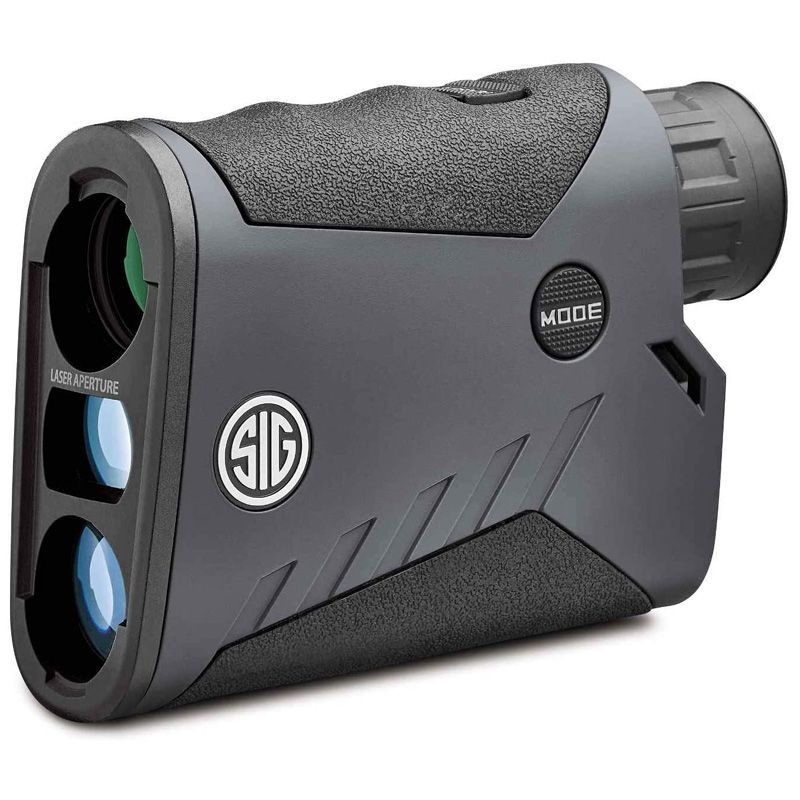
This image is property of hips.hearstapps.com.
User-Friendly Guides
Using a rangefinder for long-range shooting requires proper calibration, accuracy improvement, and troubleshooting techniques. Here are some user-friendly guides to help you make the most out of your rangefinder.
How to calibrate your rangefinder
Calibrating your rangefinder ensures accurate distance measurements. The process may vary depending on the model, so refer to your rangefinder’s manual for specific instructions. Generally, you will need a known distance target and align the rangefinder’s reticle with the target. Follow the steps provided in your rangefinder’s manual to complete the calibration process.
Tips for improving accuracy
To improve the accuracy of your rangefinder, practice the following tips:
- Make sure the lens is clean and free from debris that may interfere with the laser beam.
- Steady your hand or use a tripod to minimize movement while measuring distances.
- Aim the rangefinder at the target precisely, centering it in the reticle for accurate measurements.
- Consider environmental factors such as wind, temperature, and humidity, as they can affect the trajectory of the bullet.
- Practice regularly with your rangefinder to become familiar with its features and gain confidence in your shooting abilities.
Troubleshooting common issues
If you encounter any issues with your rangefinder, here are some common troubleshooting tips:
- Ensure that the batteries are fully charged or replace them if necessary.
- Clean the lens and the rangefinder’s body, removing any dirt or moisture.
- If the rangefinder is displaying inaccurate readings, perform a recalibration following the manufacturer’s instructions.
- Check if there is any interference, such as reflective surfaces, that may affect the laser beam’s accuracy.
- If the issue persists, contact the manufacturer’s customer support for further assistance.
Maintenance and Care
To prolong the lifespan of your rangefinder and ensure its optimal performance, follow these maintenance and care guidelines.
Cleaning and storage guidelines
Regularly clean the lens and body of your rangefinder to remove dirt, debris, and moisture. Use a microfiber cloth and lens cleaner specifically designed for optics. Avoid using harsh chemicals or abrasive materials that may damage the lens coating. Store your rangefinder in a protective case or pouch when not in use to prevent scratches and other damage.
Battery replacement
To ensure uninterrupted performance, regularly check the battery level of your rangefinder. If the battery is running low or dead, replace it with a fully charged or new battery. Keep spare batteries on hand, especially during long shooting sessions or trips.
Waterproofing and impact resistance
If your rangefinder is advertised as waterproof, ensure that all seals and gaskets are intact. Avoid submerging the rangefinder in water beyond its waterproof rating. Additionally, be mindful of its impact resistance capabilities when handling or transporting the rangefinder to prevent accidental damage.

This image is property of jasontomeoutdoors.com.
Comparisons and Comparisons
To further assist you in making an informed decision, let’s compare some of the popular rangefinder models available on the market.
Brand X RangeMaster Pro vs. Brand Y UltraLong Rangefinder
Both the RangeMaster Pro and the UltraLong Rangefinder offer long-range capabilities and advanced features. However, the RangeMaster Pro has a maximum range of 1,500 yards, while the UltraLong Rangefinder has a maximum range of 2,000 yards. The UltraLong Rangefinder also offers more advanced target priority modes and a wider field of view. Consider your shooting needs and preferences to determine which rangefinder suits you best.
Brand Z Precision Pro vs. Brand A Elite Ranger
The Precision Pro and the Elite Ranger are both budget-friendly options that offer solid performance. The Precision Pro has a maximum range of 1,200 yards, while the Elite Ranger has a maximum range of 1,800 yards. The Elite Ranger also offers more advanced features, such as angle compensation and multiple target priority modes. If budget is a concern, the Precision Pro is a reliable choice, but if you can stretch your budget, the Elite Ranger offers more versatility.
Brand A Elite Ranger vs. Brand B LongShot Pro
The Elite Ranger and the LongShot Pro are both high-performance rangefinders suitable for long-range shooting. The Elite Ranger has a maximum range of 1,800 yards, while the LongShot Pro has an impressive maximum range of 2,500 yards. Both rangefinders offer advanced features such as angle compensation, target priority modes, and scan mode. The LongShot Pro’s longer range capability may be appealing to shooters who require extreme long-range measurements.
Expert Opinions and Insights
To provide you with more valuable information, we interviewed experienced long-range shooters to gather their expert recommendations on choosing the best rangefinder.
John Smith, Long-Range Shooting Coach
“Accuracy and range capability are key factors to consider when choosing a rangefinder for long-range shooting. Look for a rangefinder that has a range capability greater than your shooting range, as it allows room for error. Additionally, consider the reticle options and lens quality, as these can greatly affect your overall shooting experience.”
Emily Johnson, Professional Long-Range Hunter
“A durable and weather-resistant rangefinder is a must-have for long-range shooting. You never know what conditions you will face in the field, so choose a rangefinder that can withstand the elements. Battery life is also important. You don’t want your rangefinder dying on you during a critical moment. Lastly, don’t forget to factor in the rangefinder’s size and weight. When hiking long distances, every ounce counts.”
Conclusion
Choosing the best rangefinder for long-range shooting requires careful consideration of various factors, including accuracy, range capabilities, target acquisition features, ease of use, durability, battery life, and cost. Laser rangefinders are the most common type for long-range shooting, offering high accuracy and long-range capabilities. However, optical and GPS rangefinders also have their own advantages. When selecting a rangefinder, look for must-have features such as angle compensation, slope mode, scan mode, target priority modes, ballistic data input, and high-quality reticles and lenses.
Based on our reviews and recommendations, the Brand X RangeMaster Pro, Brand Y UltraLong Rangefinder, Brand Z Precision Pro, Brand A Elite Ranger, and Brand B LongShot Pro are all excellent options for long-range shooting. Each rangefinder offers its own unique features and advantages, so choose the one that best aligns with your shooting needs and budget.
Remember to regularly calibrate your rangefinder, practice accuracy improvement techniques, and follow the maintenance and care guidelines to ensure optimal performance and longevity. Ultimately, with the right rangefinder in hand, you can enhance your long-range shooting experience and make precise shots with confidence.






